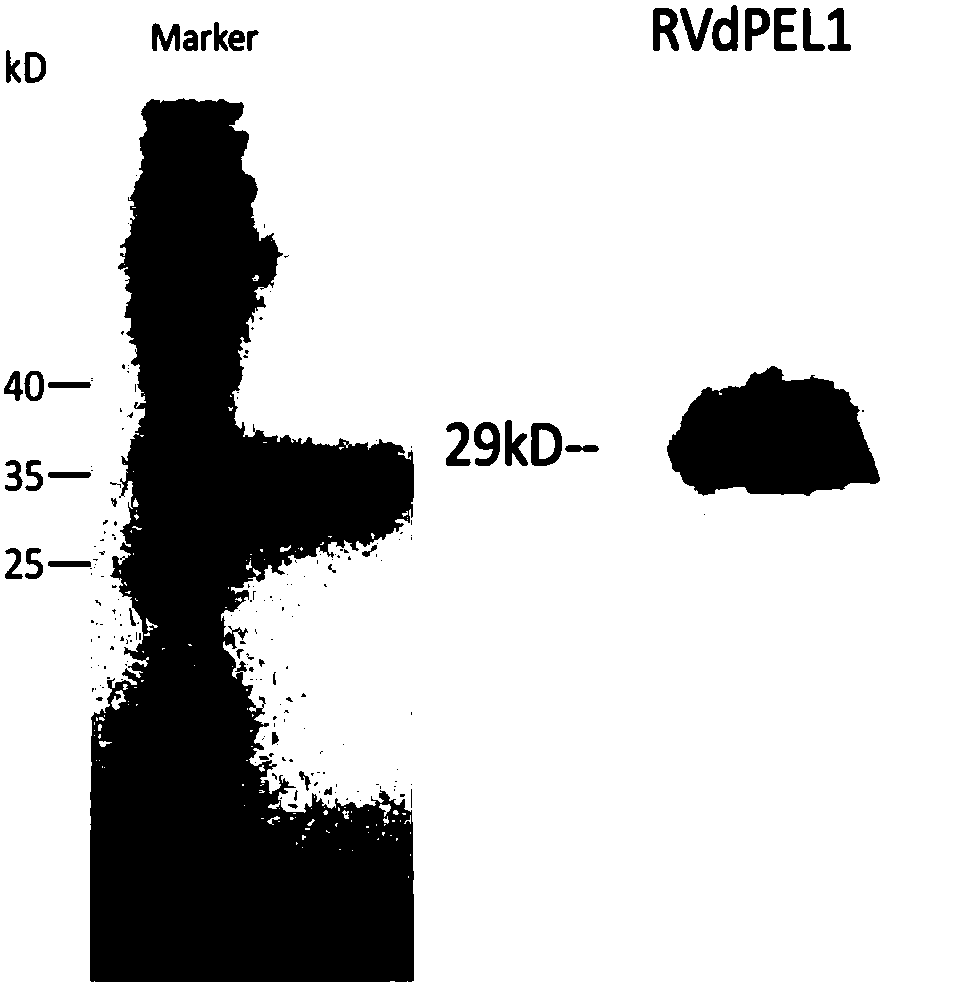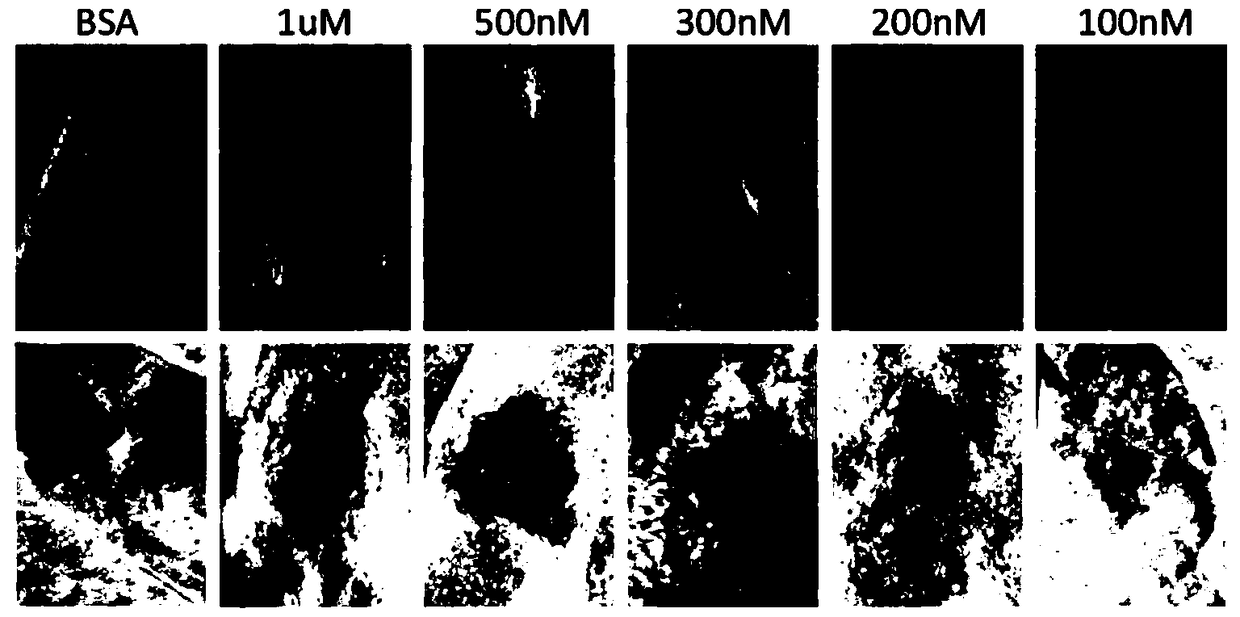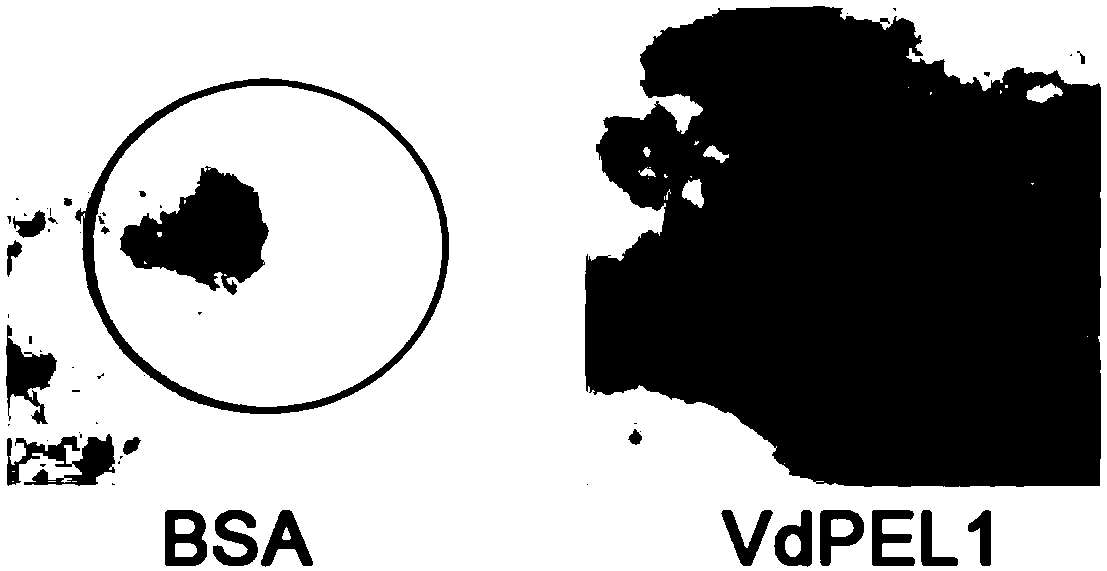Verticillium dahliae secreting type protein elicitor VdPEL1 and application thereof
A technology of secreted protein and Verticillium dahliae, which is applied in application, fermentation, fungi, etc., can solve many problems, and achieve the effect of low concentration, long action time and fast onset of action
- Summary
- Abstract
- Description
- Claims
- Application Information
AI Technical Summary
Problems solved by technology
Method used
Image
Examples
Embodiment 1V
[0030] Eukaryotic expression and purification of embodiment 1VdPEL1 protein
[0031] (1) Isolation and identification of VdPEL1 protein elicitor
[0032] Pectin lyases are widely present in the secretions of plant pathogens and have been validated as protein elicitors to activate plant immune responses (Poinssot. Immune Response, 2003, 553–564.). Based on the completion of the genome sequencing of Verticillium dahliae and the proteomics data of Verticillium dahliae, combined with the previous screening system for protein elicitors in our laboratory, the CDD function in the NCBI database was used to analyze the The conserved sequences of the pectin lyases in the secretome were compared with the reported elicitors, and the phylogenetic tree analysis was carried out at the same time, and 10 candidate proteins were identified. The coding sequences of 10 candidate proteins were respectively constructed into the transient expression vector PYBA1132, transformed into Agrobacterium ...
Embodiment 2
[0041] Example 2 VdPEL1 induces plant defense response
[0042] (1) VdPEL1 induces tobacco hypersensitivity response (HR)
[0043] After the concentration of VdPEL1 protein was determined, its concentration was adjusted to 1 μM, 500nM, 300nM, 200nM and 100nM. Select the vigorously growing middle leaves of tobacco at the 5-6 leaf stage, and inject about 20uL of the recombinant protein VdPEL1 at a specified concentration into different tobacco leaves from the back of the leaves with a 1mL syringe without a needle. At the same time, 1 μM BSA (buffer solution: 20 mM Tris-HCl, pH 8.0) was used as a control, and allergic reactions were observed 48 hours after injection. At the same time, the treated leaves were photographed and stained with trypan blue to observe the staining condition.
[0044] Results: There were obvious allergic reactions on the leaves treated with recombinant protein VdPEL1, and the allergic reaction parts were stained blue after trypan blue staining. (Such a...
Embodiment 3
[0061] Example 3 VdPEL1 induces disease resistance in tobacco and cotton
[0062] (1) Inducing tobacco resistance to Botrytis cinerea
[0063] 50 uL of purified VdPEL1 (1 μM) was injected into different tobacco leaves from the back of the leaves. With the same concentration of BSA (20mM Tris-HCl buffer, pH 8.0) as the control, 20 strains were treated and repeated 3 times. After 72 hours of induction, the spore suspension of Botrytis cinerea (10 5 pc / ml), moisturized for 24h, and measured the lesion size on the 3rd day.
[0064] Control leaf lesion area = 31.15mm 2
[0065] Treated leaf lesion area = 20.94mm 2
[0066] Results: The elicitor protein VdPEL1 can induce tobacco resistance to Botrytis cinerea (such as Figure 5 ), and the lesion area was reduced by about 32.78%.
[0067] (2) To induce tobacco resistance to tobacco mosaic virus (TMV)
[0068] 50uL of purified VdPEL1 solution (500nM) was injected into different tobacco leaves from the back of the leaves, and ...
PUM
 Login to View More
Login to View More Abstract
Description
Claims
Application Information
 Login to View More
Login to View More - R&D
- Intellectual Property
- Life Sciences
- Materials
- Tech Scout
- Unparalleled Data Quality
- Higher Quality Content
- 60% Fewer Hallucinations
Browse by: Latest US Patents, China's latest patents, Technical Efficacy Thesaurus, Application Domain, Technology Topic, Popular Technical Reports.
© 2025 PatSnap. All rights reserved.Legal|Privacy policy|Modern Slavery Act Transparency Statement|Sitemap|About US| Contact US: help@patsnap.com



